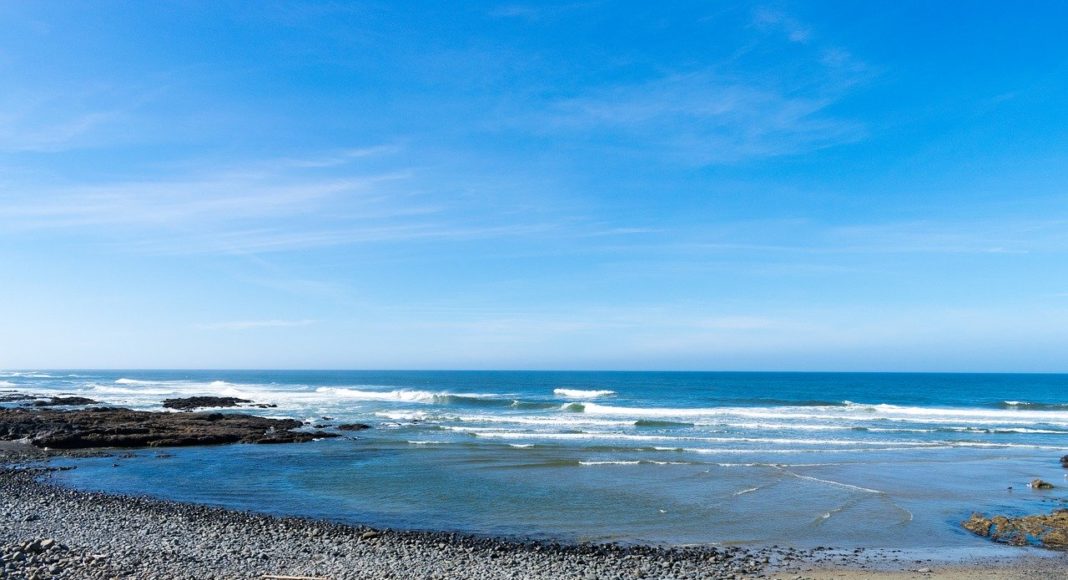
Nine years old on a gorgeous summer day. Walking down the long driveway to the mailbox, hoping. Inside: the familiar yellow border; laurel and acanthus leaves; the four globes: The National Geographic Magazine! Better yet, an article by Jacques Cousteau about diving ancient wrecks in the Mediterranean. When I grew up, I wanted to explore ancient sites in the sea.
Last Monday I walked the beach at mean tide looking for clues. When you want to find something, your eyes and mind play tricks; you see what you hope to see. Carefully I noted things easily confused for what I was looking for: clam gardens.
Native Americans on the Northwest Coast are not often described as gardeners, but they were. They did not cultivate plants in rows. Nor were their plants familiar to early American settlers who loosed their hogs in them to fatten on the bulbs and leaves. When the Americans arrived, almost every village had a garden of several acres where potatoes, introduced by the Spanish and the Hudson’s Bay Company, and other plants grew. The people also cultivated fields of camas, “wild” carrots, onions, celery, and stinging nettles grown for the tough fibers used to make durable nets. These gardens were weeded of invasive plants and burned over after harvest to promote selective growth.
The same methods were employed on beaches. Women selected clam beds and weeded out boulders and cobbles, giving shellfish more room to propagate. Starfish, moon snails, and other clam predators were also culled. Such gardens are well known and documented on the British Columbia coast. Further south they are described on the Swinomish Reservation near the town of La Conner, and that tribe has resumed the practice, the first native group to do so in the United States. But were clam gardens cultivated further south in Puget Sound?
Creating a native cultural-practice inventory for the Shoreline Historical Museum, I started looking for evidence. Boulders and cobbles were piled beside the gardens, forming rock rows like the ones you sometime sees in encroaching New England woods, marking the borders of old fields. On the beach they mark gardens and also pens where fish were herded for capture. I looked for patterns, much as one looks for them in clouds, but these should be less transient. More than a century has passed since the gardens were kept and wave action has been constant. Would the patterns survive?
I believe I found one, possibly two remnants of clam gardens. What I was not looking for was the trail leading to them through barnacle-clad, ankle-twisting cobble fields. For these trails, Native Americans also removed stones, leaving sandy paths kinder to bare feet no matter how calloused. I followed one 18 inches wide for a quarter mile. I have walked this same rocky beach many times looking for shells, never thinking to look for patterns.
Are these castles in the air? Possibly, but maybe not. More work needs to be done, and there is more evidence to ponder. But the experience of walking an ancient path in a modern city, of feeling the sand on my feet as did happy clam diggers in their fresh world centuries ago, is wonderful. It was even more wonderful than a young mind’s swimming through aquamarine scenes of Greek shipwrecks and tumbled heaps of Dressel II-A amphoras.
Discover more from Post Alley
Subscribe to get the latest posts sent to your email.

A lovely piece — thank you.
It brought to mind a certain stretch of beaCh of my childhood, on Filucy Bay. Pretty far south on the sound, but perhaps worth investigating!
Nice article…keep clam !
Sea Stars NOT Starfish. My Grand children would correct you .
Brings to mind the extensive stone fish pens along the shore of Molokai: rocks were stacked such that small fish could swim through the spaces between them, but larger fish could not, with the effect that some small fish would swim in and stay long enough to grow too big to leave, and then be trapped until the pen-keepers were ready to eat them.
What a fabulous story. And I’m very happy to hear that the Swinomish people have revived the practice.